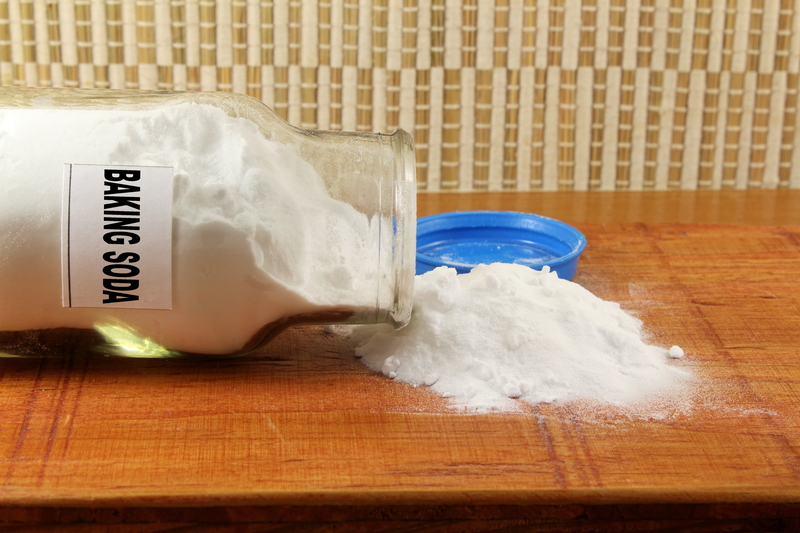High-Pressure Washing for Effective Cleaning
Posted on 27/03/2025
High-Pressure Washing for Effective Cleaning
In today's fast-paced world, cleanliness and maintenance are of paramount importance, not just in residential areas but in commercial and industrial spaces as well. One of the most efficient methods of ensuring pristine conditions is high-pressure washing. This cleaning technique, known for its power and effectiveness, utilizes a high-pressure mechanical sprayer to remove dirt, grime, paint, mold, and other stubborn residues from surfaces. In this article, we will delve into the intricacies of high-pressure washing, its benefits, applications, and best practices.
What is High-Pressure Washing?
High-pressure washing, also known as power washing, involves the use of a high-pressure water spray to clean surfaces. The pressure of the water is significantly higher than that from an ordinary garden hose--typically starting from 1,500 pounds per square inch (psi) and can go up to 4,000 psi and beyond. This intense force enables the removal of difficult pollutants that ordinary pressure cannot manage.

Benefits of High-Pressure Washing
High-pressure washing offers several advantages:
Effectiveness
The high pressure of the water spray ensures an effective clean, removing dirt, grime, and even hard-to-remove substances like oil stains and chewing gum.
Time-Efficiency
Due to its power, high-pressure washing can accomplish cleaning tasks much faster than traditional methods. This is particularly beneficial for large areas and commercial properties.
Cost-Effectiveness
By reducing cleaning time and requiring fewer resources, high-pressure washing can save money in labor and material costs over time.
Versatility
This cleaning technique is versatile and can be used on a plethora of surfaces, from concrete and wood to metal and glass. It is suitable for cleaning driveways, patios, walls, vehicles, and even industrial machinery.
Eco-Friendly
High-pressure washing uses water as its primary cleaning agent, which makes it environmentally friendly compared to chemical-based cleaning agents.
Applications of High-Pressure Washing
Residential Spaces
In homes, high-pressure washing is often used for cleaning driveways, sidewalks, siding, decks, and patios. It helps in maintaining the aesthetic appeal of the property and prolonging the life of the surfaces.
Commercial Properties
Businesses such as restaurants, retail stores, and office buildings regularly employ high-pressure washing to keep their premises clean and welcoming. This includes cleaning parking lots, sidewalks, exterior walls, and even awnings.
Industrial Settings
In industrial environments, high-pressure washing is indispensable. It is used for cleaning manufacturing equipment, warehouses, and industrial flooring. The technique is effective in removing grease, paint, and other industrial residues.
Automotive Industry
Car washes often utilize high-pressure washing for its efficiency in removing dirt and grime from vehicles without causing damage to the paintwork.
Graffiti Removal
High-pressure washing is also highly effective in removing graffiti from buildings, walls, and public spaces, restoring them to their original condition.
Types of High-Pressure Washers
There are several types of high-pressure washers, each suited for different applications:
Electric Pressure Washers
These are ideal for small to medium-sized cleaning tasks. They are generally quieter and more user-friendly, making them suitable for residential use.
Gas-Powered Pressure Washers
These are more powerful than electric models and are better suited for larger tasks and commercial applications. However, they are noisier and require more maintenance.
Hot Water Pressure Washers
These models use heated water, which is more effective at cutting through grease and oil. They are often used in industrial settings for heavy-duty cleaning.
Cold Water Pressure Washers
These are standard models that use unheated water. They are versatile and suitable for a wide range of cleaning tasks.

Best Practices for High-Pressure Washing
To maximize the benefits of high-pressure washing and ensure safety, it's crucial to follow certain best practices:
Understand the Surface
Different surfaces require different pressure settings. For instance, concrete can withstand higher pressure compared to wood or vinyl siding. Misjudging the required pressure can cause damage to the surface.
Use Appropriate Detergents
While high-pressure washing is effective on its own, using the right detergents can enhance its cleaning power. Be sure to choose eco-friendly and surface-appropriate detergents.
Safety First
High-pressure water can cause injury if not handled correctly. Always wear protective gear, including gloves and goggles, and never aim the sprayer at people or pets.
Proper Maintenance
Regularly maintain your pressure washing equipment. Check for leaks, inspect hoses and nozzles, and ensure the engine (if applicable) is in good working condition.
Test Before Use
Perform a test wash in an inconspicuous area to ensure the pressure and detergent are appropriate for the surface. This can help avoid any unintended damage.
Conclusion
High-pressure washing is an incredibly effective and versatile cleaning method that offers numerous benefits over traditional cleaning techniques. From residential areas to commercial properties, and industrial settings to automotive applications, high-pressure washing can tackle a wide range of cleaning tasks with ease. By understanding the different types of pressure washers, their applications, and best practices, you can make the most out of this powerful cleaning tool.
Whether you are a homeowner looking to maintain your property, a business owner seeking to present a clean and professional facade, or an industrial manager needing reliable cleaning solutions, high-pressure washing is an effective way to ensure immaculate cleanliness and prolonged surface durability.

